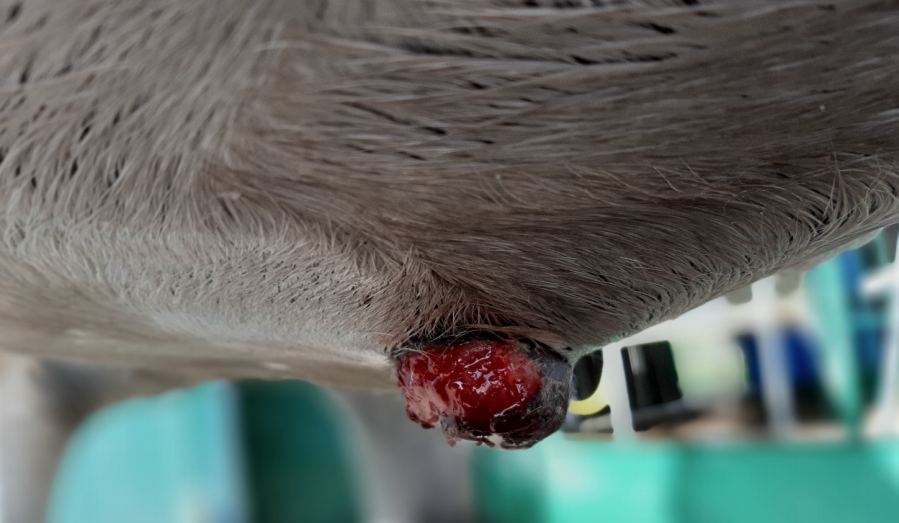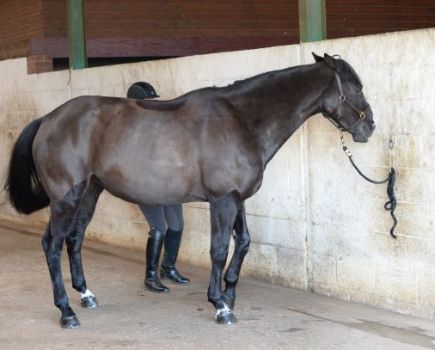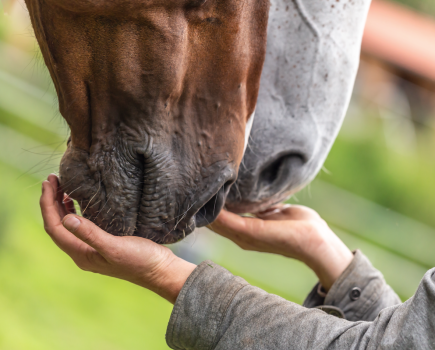Sarcoids are a very common type of benign skin tumour that affect horses and there are several treatment options for owners to consider, including a cream created by Professor Derek Knottenbelt.
Sarcoids can affect the health of male and female horses, ponies and donkeys, but geldings are more likely to be affected. They affect all ages apart from young animals under about two years old and some animals appear to be genetically susceptible to developing sarcoids.
Treatment options for a sarcoid
Sarcoids can be treated in a number of different ways, sometimes using a variety of treatment options, depending on the type, location and size of the sarcoid.
Vets also have to take into consideration the temperament of the horse, the owner’s financial budget and the particular experience and preferences of the treating vet.
Treatment options include a variety of topical chemical creams and drugs which can be injected directly into the sarcoid (chemotherapy), as well as various surgical methods, including surgical removal and cryo-surgery.
Often multiple treatment approaches may be required for a single horse to reduce to risk of recurrence.
Treatment cream for a horse with a sarcoid
In my experience, the treatment which gives the highest success rate is a chemotherapy cream provided by Professor Derek Knottenbelt.
This was the treatment I chose for a patient of mine called Albie, who had a number of various sarcoid types over his belly, groin and sheath.
The cream required application for a total of five days spread over a course of 10 days. Then we waited.
Some of the sarcoids responded very well and were gone with the first round of treatment. But some required a second round of treatment and then a third round.
Albie’s owner was very patient as the whole process took over a year to complete and to complicate matters some treatment sites developed infection. They did all go, though, and so far he has had no recurrence.
Types of sarcoids
Sarcoids are very variable in size and appearance, behaviour and in how they respond to treatment.
This variability makes the treatment of a sarcoid a challenge to both horse owners and vets. While sarcoids may be locally aggressive, they do not metastasize to other parts of the body.
There are six different types of sarcoid which vary in appearance and growth patterns, from flat flaky patches to large, ulcerated pedunculated growths:
- Verrucose sarcoid: usually irregular patches of slightly raised, crusty or flaky skin.
- Fibroblastic sarcoid: consist of red/yellow ulcerated, proliferating masses, that bleed readily and may be covered in a crusty discharge, attracting flies in the summer. They may become quite large and hang down from the body.
- Nodular sarcoid: usually smooth, firm, fibrous lumps within or under the skin. They can be found individually or in groups.
- Occult sarcoid: a smooth, flat area of hair loss often with well-defined margins with relatively normal looking skin.
- Malignant sarcoid: widespread infiltration of different types of sarcoid covering a considerable area, with little evidence of normal skin, usually seen in genetically susceptible individuals.
- Mixed sarcoid: these contain any combination of the different types of sarcoid, occurring at the same location at the same time.
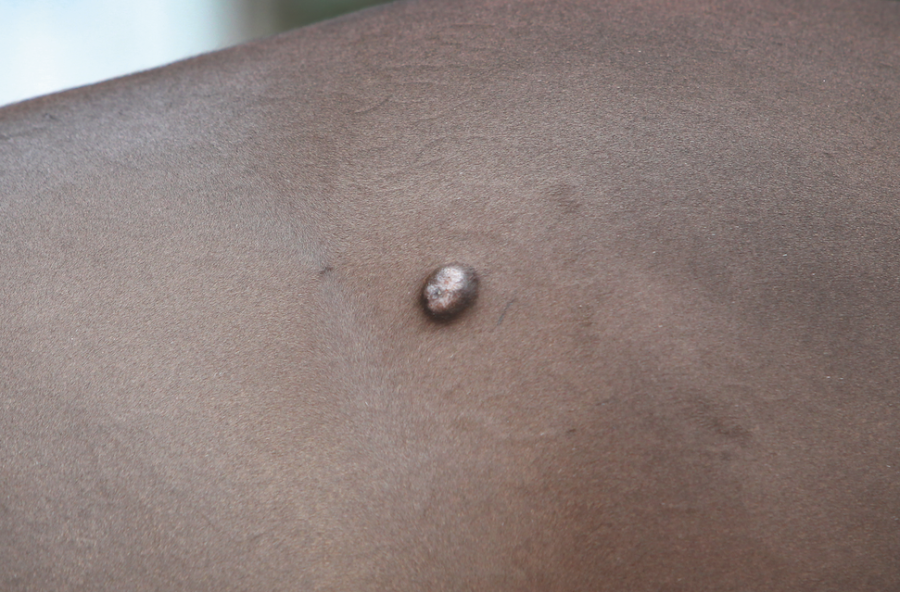
Common places for sarcoids
Sarcoids can occur at almost any site on a horse’s skin, although there are some regions that are more liable to their development, such as the skin of the head and neck, between the front legs and in the groin area.
While they can spread within the skin, they do not spread to the internal body organs.
Sarcoids are likely to multiply on an individual horse and individual lesions may enlarge rapidly or slowly, especially when the sarcoid is traumatised or otherwise interfered with. Individual lesions frequently enlarge over time although they may remain static for many months or years.
Nothing is known about potential triggers for exacerbation apart from the fact that trauma (either accidental or intentional) can trigger the development of the most aggressive forms from even the earliest mildest and smallest lesions.
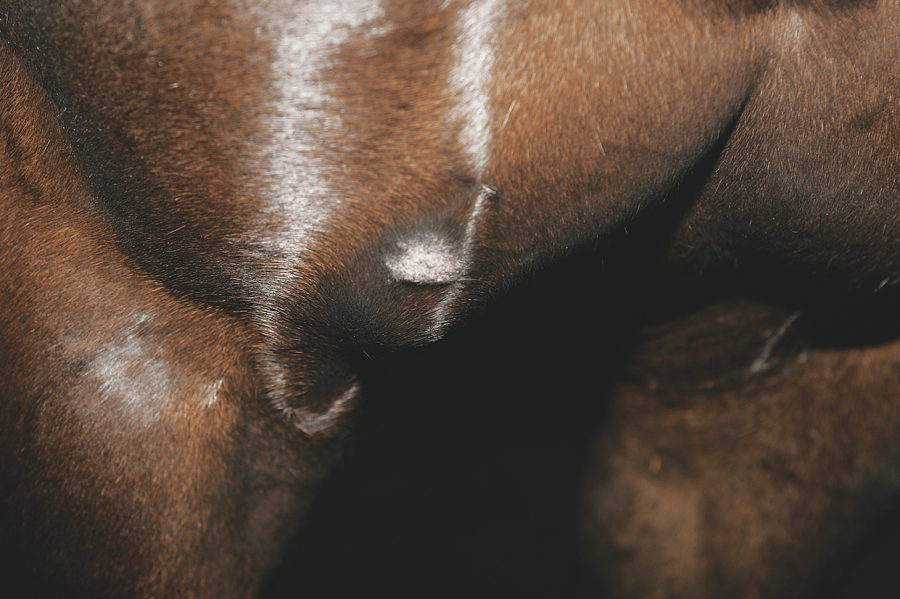
How sarcoids affect horses
Sarcoids can affect a horse in a variety of ways:
- The sarcoid can become ulcerated and/or infected.
- Sarcoids that develop at sites such as the eyelids and over joints and coronary bands can cause severe functional problems.
- >Cosmetic difficulties may reduce the owner’s enjoyment of the horse and may impair the relationship between the horse and the owner.
- Location of the sarcoid can make it impossible to wear tack/rugs. They may rub against the girth when sited on the belly, for example.
- Sarcoids are ‘attractive’ to flies in the summer months and this can be highly distressing for the horse.
- A horse with sarcoid(s) may be unsellable and is certainly worth less in a sale than it would be if it had no sarcoids; sarcoid is a common cause of loss of commercial value even in high performance horses.
- Sarcoids may limit the working life of horses both in the short and longer term.
- Sarcoids are thought to be hereditary and so render an affected mare or stallion useless as breeding stock.
Diagnosing a sarcoid
Sarcoids vary greatly in appearance, in some cases resembling warts, areas of proud flesh or even a patch of ringworm.
To confirm a diagnosis of sarcoid, a tissue sample or biopsy can be taken and examined at the laboratory.
However, sampling a sarcoid can stimulate it to grow, so they are often treated without taking a biopsy first. Treatment by cream or whichever method is chosen should always be prompt when a biopsy result confirms the presence of a sarcoid on the body of a horse.
Treatment of a sarcoid with a cream at the earliest opportunity increases the success rate and reduces the chance of further sarcoids developing on the horse.
Laser surgery
By far the most common use of laser surgery in the horse is for treatment of a sarcoid.
During surgery, the sarcoid is removed, leaving a wide skin border to minimise the risk of regrowth.
Often with laser surgery, wounds are not sutured closed; this is in part due to the large size of some tumours, where closing the skin would pull the wound edges too tight.
Heat damage to the wound edges also means surgical closure doesn’t always result in quicker healing time.
LASER is the acronym for Light Amplification by Stimulated Emission of Radiation. A laser generates an intense beam of light that can be used to cut, seal or vaporise tissue. The benefits of laser surgery over traditional sharp surgical techniques include:
- Minimised risk of spreading tumour cells during tumour removal
- Reduction in bleeding during surgery, as the laser will seal many small vessels while cutting
- Less pain, as the laser seals nerve endings as it cuts them
- Reduction in inflammation, swelling and postoperative infection at wound site (promotes fast and efficient wound healing)
- Faster recovery, resulting from the combination of reduced bleeding, pain, inflammation and infection risk.
Although these wounds can at first sight seem intimidating, due to their size and number following sarcoid removal, they usually heal rapidly with few complications.
Laser removal is associated with minimal pain, swelling and inflammation and reduction in postoperative infection. As such, we expect the majority of patients to make a fast and uneventful recovery, enabling a swift return to work.
Are sarcoids contagious?
It is thought that sarcoids are spread by flies, but immunity is an issue. Horses in a herd with high immunity to sarcoids won’t develop them and the cause is most certainly spread by the bovine or papilloma virus.
There are different levels of immunity in horses. Some will have full immunity against sarcoids, others may develop one or two sarcoids, and some are unlucky to have a low immunity to them and develop clusters..
Images © Shutterstock

